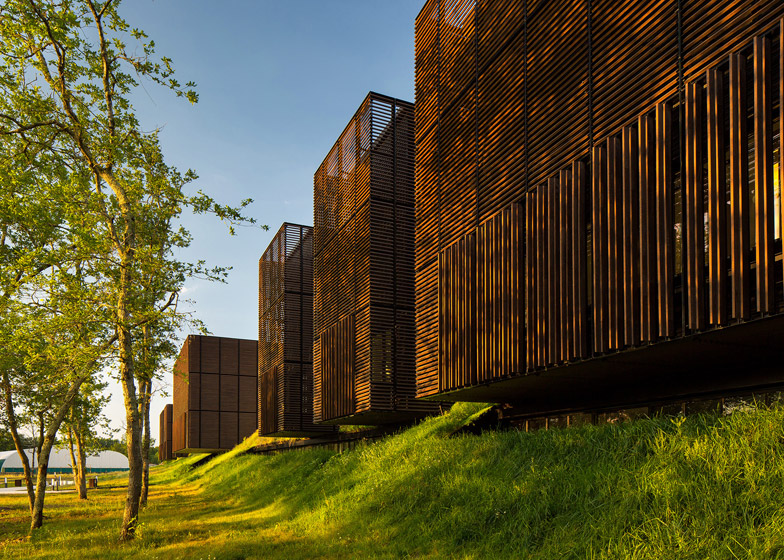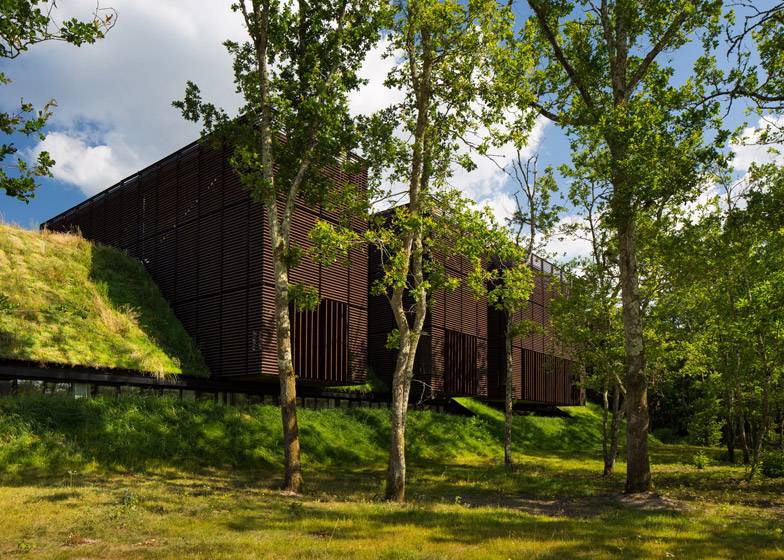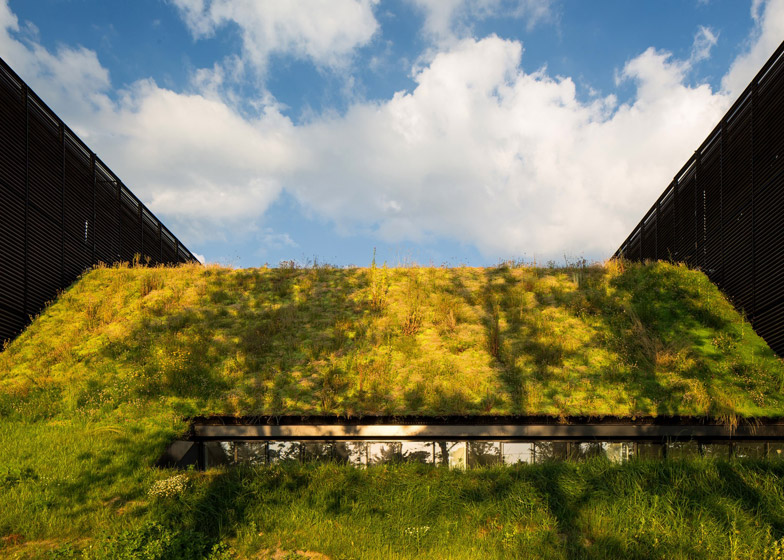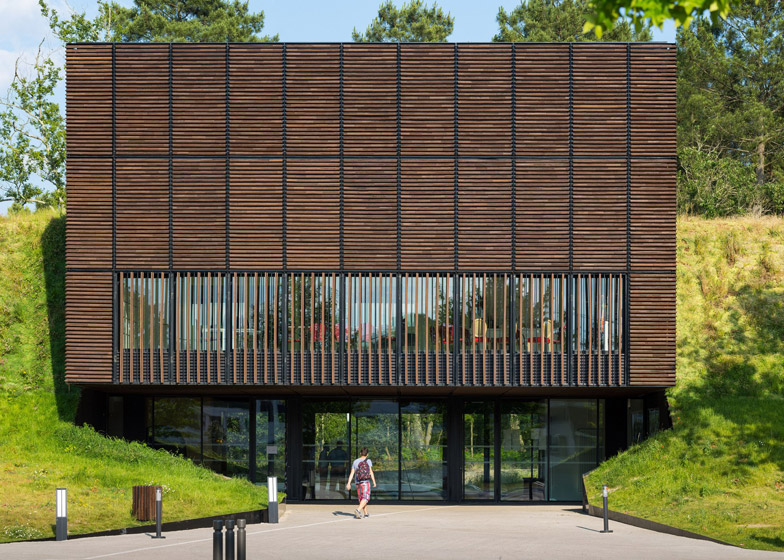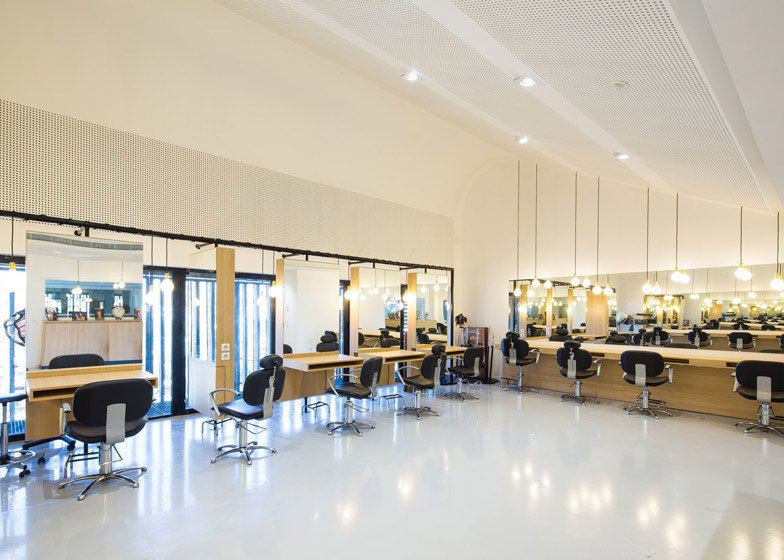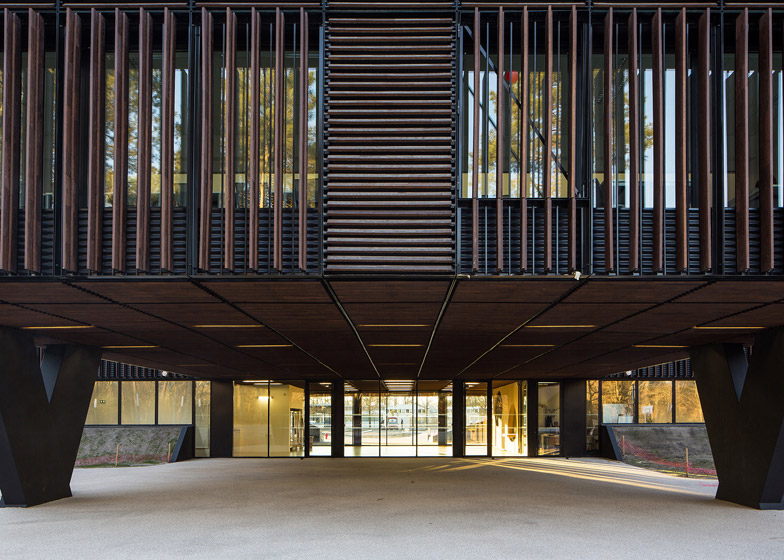This row of timber-clad boxes projecting from an artificial grassy slope in France contains the teaching facilities of an apprentice training centre by architects Marjan Hessamfar and Joe Vérons (+ slideshow).
Located in a forest in the Aquitaine region, the Mont-de-Marsan education centre was designed by Marjan Hessamfar and Joe Vérons to accommodate 600 students training in disciplines including catering, beauty and floristry.
Previously located in the centre of the nearby town, the old facility had become run down, leading local trade association Chambre des Métiers to create a new building close to the existing sports and educational amenities of an existing high school.
The plot is surrounded by oak and pine trees, so the architects chose to partially submerge the structure beneath a turfed ramp that ascends over gaps between the wooden volumes, and used locally sourced pine to echo the tonality of the trees.
"Our intention was to drag the building under a green coat to encourage a perfect fusion between the construction and the nature," architect Joe Vérons told Dezeen.
"Split into individual blocks, the broken facade promotes a fairly low scaled building," Vérons added. "Landscaping of the site has a continuous flowing feel as it incorporates the building into the actual forest."
The artificial slope, which covers the building's ground level and merges with the forest floor, provides protection from prevailing winds as well as from the sun's heat during summer.
A horizontal aperture in the side of the grassy bank allows daylight to reach the subterranean spaces, while louvered sections in the timber slats that front the first floor spaces allow indirect light to enter these rooms.
The timber used in the project was jointed and glued while still green to ensure its resistance to twisting and warping. The technique was developed by a team architects, engineers and manufacturers at a research centre supported by French timber industry promoter Xylofutur.
The largest of the wooden volumes, located at the centre of the building, cantilevers over an entrance path. This leads into the reception area and then through to a playground at the rear that can be viewed through glass doors on either side.
The ground floor accommodates offices and facilities for teaching floristry, catering and furniture making, while the upper storey houses computer rooms and resource spaces, as well as classrooms and dedicated areas for teaching hairdressing, beauty treatments and sales.
Interiors are white and minimally decorated to make the most of the natural light and emphasise the functionality of the spaces. Pebble-shaped openings in the plywood-clad wall of the reception were a final addition, designed to offer "natural" details.

